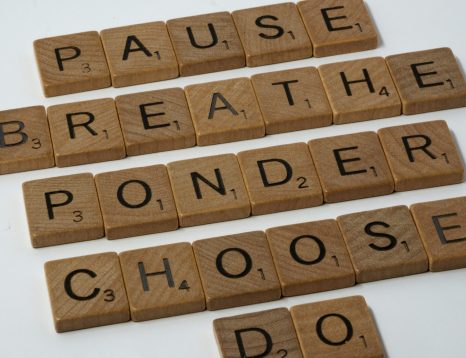
Somatization describes the process by which psychological or emotional problems are transformed into physical symptoms. This connection between mind and body is so strong that emotions, such as anxiety, can manifest as:
- Headaches or migraines
- Chest pain or feeling of heaviness
- Difficulty breathing
- Gastrointestinal discomfort (e.g. stomach aches, diarrhea)
- Muscle tension or tightness
- Skin problems (e.g. rashes, itching)
Often, these symptoms appear without an obvious organic cause and can be disorienting, leading to medical tests. However, behind these signs lies a deeper truth: our body is trying to send us a message.
If we are under chronic stress, the stress becomes so intense that we develop various psychosomatic issues. **Psychosomatics** are physical symptoms or conditions that are caused by psychological factors, such as anxiety, depression, or emotional stress. They are the physical expression of the interaction between the mind and the body. When our mental state is under stress, our body often “speaks” through symptoms that have no organic cause.
And where do changes in normal occur?oh biological levelThe? In our central nervous system. Stress activates the sympathetic nervous system , also known as the “fight or flight” mechanism. This means that our body prepares itself for a perceived threat by increasing heart rate, breathing, and muscle tension. Stress hormones are produced, such as cortisol, adrenaline, and noradrenaline, which disrupt homeostasis. When this condition becomes chronic, our body experiences constant stress, leading to the long-term manifestation of a disease.
The somatization of anxiety is not a sign of weakness. It is a call for care, self-awareness and action. It challenges us to take a more active role in controlling our health, our thoughts and our emotions. How do we achieve this?
- Adding activities such as yoga, meditation, breathing techniques, and relaxing activities (a walk in the mountains or a walk next to running water) to our lives can reduce symptoms of anxiety and restore calm to the body.
- Regular exercise, good sleep, and a healthy diet shield the body against the negative effects of stress.
- Seek support from a mental health professional. Psychotherapy helps us connect our physical experiences with our mental state. Through this process, we learn to better manage our stress.
- Clinical hypnotherapy is a powerful tool that can help reduce anxiety and identify physical symptoms.
Hypnotherapy is a therapeutic method that utilizes the state of deep relaxation, known as hypnosis, to explore and work through the causes of anxiety. It is not “sleep”, but a focused attention, where the mind is receptive to positive changes and suggestions. The hypnotherapy is an effective approach to managing somatization of anxiety, as it aims to reach the source of the problem: the subconscious. The subconscious is the part of our mind where thoughts, feelings and experiences are stored that we often do not consciously process, but can strongly affect our body. Hypnotherapy helps to retrain the subconscious to react more calmly to situations that cause anxiety. For example, through positive suggestions, we can replace reactions of fear or tension with feelings of calm. Traumatic experiences can be stored in the body and manifest through somatized symptoms. Hypnotherapy offers a safe environment to process these experiences.
Our body is our soul's most loyal ally. When we somatize stress, it's not something to be afraid of, but an opportunity to listen to ourselves better. It's a reminder that taking care of the mind and body are interconnected and equally important.
Let's remember that understanding and caring for ourselves are the first steps to a life of more balance and well-being!











